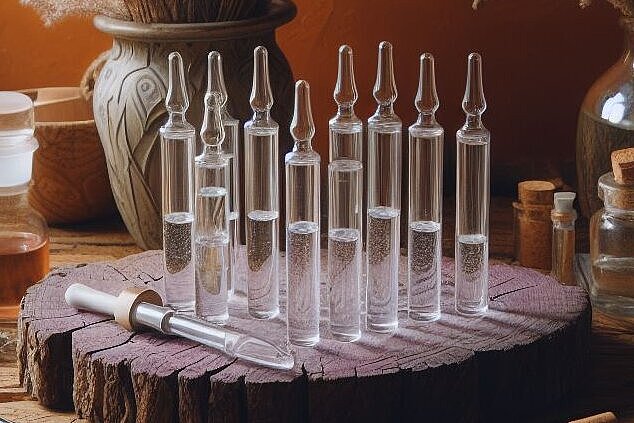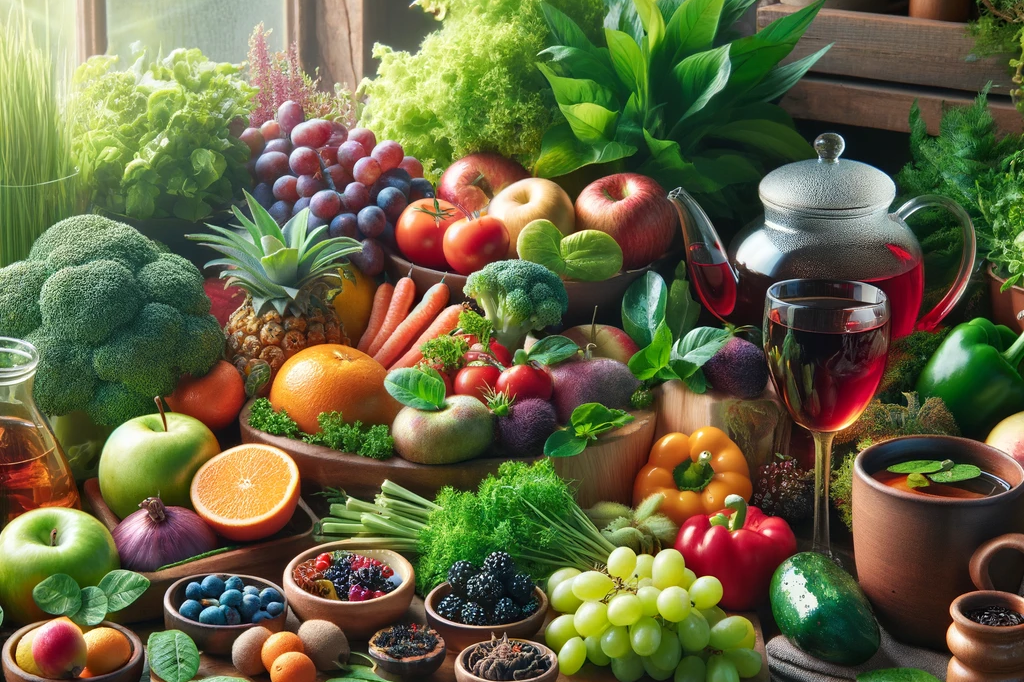Gallic acid

What is gallic acid?
Gallic acid, an organic acid belonging to the phenolic acid group, is present in a variety of plants, fruits and teas. It is known for its antioxidant properties and plays an important role in plant defense against pests and diseases. In the human diet, gallic acid is valued for its health-promoting effects, including its role in protecting against oxidative stress and its potential ability to reduce the risk of certain chronic diseases.
Benefits of gallic acid for dogs
Antioxidant properties
The antioxidant abilities of gallic acid can help protect your dog's cells from free radical damage. This is particularly important as oxidative damage has been linked to a variety of diseases and premature ageing.
Supporting heart health
Some studies suggest that antioxidants such as gallic acid may support heart health. Although specific research on dogs is lacking, gallic acid could potentially help maintain a healthy cardiovascular system.
Potential antimicrobial effect
Gallic acid has been shown to have antimicrobial properties, meaning that it can inhibit the growth of harmful bacteria and fungi. This could be particularly useful for dogs prone to skin infections or digestive problems.
Disadvantages and risks
Possible toxicity in case of overdose
As with many natural substances, an overdose of gallic acid can be potentially toxic. It is important to control intake and ensure that your dog does not ingest too much gallic acid through supplements or foods containing gallic acid.
Interactions with medications
Gallic acid can interact with certain medications and affect their effectiveness. If your dog takes medication regularly, speak to your vet before adding bile acid-containing products to your dog's diet.
Digestive problems
In some cases, introducing foods containing bile acids into your dog's diet can cause digestive problems, including diarrhea or vomiting. Always start with small amounts and observe your dog's reaction.
Gallic acid, a naturally occurring phenolic compound with antioxidant and antimicrobial properties, may offer potential benefits for your dog's health. From supporting heart health to protecting against oxidative stress, gallic acid could be a valuable addition to your four-legged friend's diet. However, caution is advised to avoid overdosing and possible side effects.
If you notice any signs of hypersensitivity or poisoning in your dog, you should see your vet immediately. We are not a substitute for a vet, but we try to be as accurate as possible. Every dog reacts differently and we recommend you get a second opinion or consult your vet if in doubt.
Stay healthy and take good care of your four-legged friend!😊
Similar to Gallic acid
Ellagic acid is a polyphenolic compound found in many fruits and nuts, including raspberries, strawberries, pomegranates, walnuts and pecans. It is formed from tannins and through the metabolic...
Tannic acid, often referred to simply as tannin, is a plant compound that belongs to the polyphenols. It occurs naturally in a variety of plants, fruits, nuts and even some teas. Tannic acid is...
Protocatechuic acid is a type of phenolic acid, a phytochemical found in a variety of plants, including certain fruits, vegetables, tea and wine. As an antioxidant, it is known for its ability to...
Vanillic acid, chemically known as 4-hydroxy-3-methoxybenzoic acid, is an organic compound that results from the oxidation of vanillin. It is found naturally in many plants and is an important...


